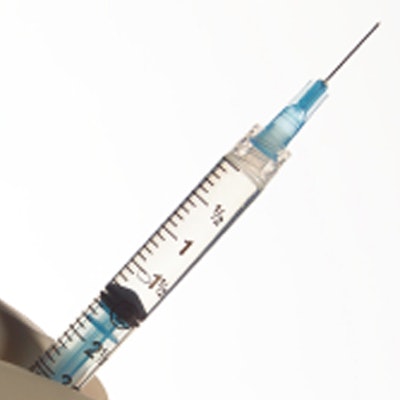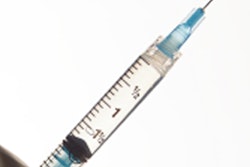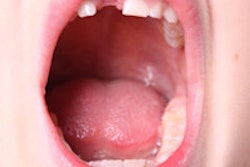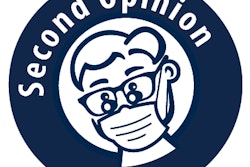
What's the maximum recommended dose for lidocaine or mepivacaine during dental procedures? The answer remains unclear as guidelines published by dental organizations differ from those of manufacturers and textbooks.
To further understanding about discrepancies in recommended maximum safe doses for commonly used local anesthetics, researchers surveyed faculty members at U.S. dental schools. The investigators found that no one dosage was taught by educators, and some were unaware that there was more than one standard.
"It is concerning that a full 22% of our study's respondents -- the educators responsible for teaching our future dentists -- were unaware of the existence of two dosage standards," the authors wrote (Journal of Dental Education, June 2018, Vol. 82:6, pp. 621-624).
The researchers were led by Dean DeLuke, DDS, a professor and the director of predoctoral oral and maxillofacial surgery at Virginia Commonwealth University School of Dentistry in Richmond.
Maxing out
Some dental textbooks cite higher safe maximum doses for local anesthesia than do guidelines published by the ADA Council on Dental Therapeutics or the American Academy of Pediatric Dentistry, and reviews by dental experts mention safe doses that differ from each other, the study authors noted. This, in turn, creates confusion for dental students and faculty and raises questions regarding standards for licensing exams, they added.
The researchers sought to learn more about the level of uniformity in teaching at U.S. dental schools about the maximum safe doses for commonly used local anesthetics. To do so, they surveyed faculty responsible for teaching about local anesthesia at these institutions.
The investigators created a six-question survey designed to assess instructor awareness of the maximum recommended doses of lidocaine and mepivacaine. They sent an email about the survey, including a link to it, to the academic deans at all 62 U.S. dental schools that had graduated classes and asked them to forward the email to the faculty member primarily responsible for teaching predoctoral students about local anesthesia.
A total of 37 respondents completed the survey, with the majority being oral and maxillofacial surgery faculty members. Other respondents included dental anesthesiologists, general dentists, a periodontist, and a dental hygiene faculty member.
The researchers found that no standardized recommended maximum dose of lidocaine or mepivacaine was taught in U.S. dental schools. Most respondents reported that their school's guideline for maximum doses of 2% lidocaine with epinephrine 1:100,000 was 500 mg or 7 mg/kg, with a smaller number saying it was 300 mg or 4.4 mg/kg.
For 3% mepivacaine plain, the majority of respondents said their school's guideline was 300 mg or 4.4 mg/kg, with a smaller number reporting 400 mg or 7 mg/kg, a handful reported "other" with a variation of the higher recommended dose or without specifying the amount, and one reporting 500 mg.
| Survey responses for maximum local anesthetic doses by percentage (No.) of dental schools | |||
| Type of local anesthetic | Maximum recommended doses | ||
| 2% lidocaine with epinephrine 1:100,000 | 300 mg or 4.4 mg/kg | 500 mg or 7 mg/kg | |
| 27% (10) | 73% (27) | ||
| 3% mepivacaine plain | 300 mg or 4.4 mg/kg | 400 mg or 6.6 mg/kg | Other |
| 60% (22) | 32% (12) | 8% (3) | |
The researchers found a statistically significant relationship between reporting the maximal doses for the two drugs (p = 0.0169), which was due to the fact that all of those who selected the lower dose of lidocaine also chose it for mepivacaine. At the same time, similar majorities taught the higher maximum dose for lidocaine yet the lower maximum dose for mepivacaine (see table below).
| Comparison of doses of 2 drugs chosen by respondents | ||
| Dosage of 3% mepivacaine chosen | ||
| Dosage of 2% lidocaine with epinephrine 1:100,000 chosen | 300 mg or 4.4 mg/kg | 400 mg or 6.6 mg/kg |
| 300 mg or 4.4 mg/kg | 8 | 0 |
| 500 mg or 7 mg/kg | 14 | 12 |
The majority of respondents reported being aware before receiving the survey of two different standards for maximum local anesthetic dosage, and the majority of those individuals said they communicated this to their students, yet still more than 1 in 5 were previously unaware of the existence of two dosing standards.
| Awareness of and teaching about different maximum local anesthetic standards | ||
| Percentage (No.) responding | ||
| Survey question | Yes | No |
| Before seeing this survey, were you aware of two differing standards for maximal local anesthesia dosage in dentistry? | 78% (29) | 22% (8) |
| Of those (n = 29) who were aware of two standards: Do you ensure your students are aware of the two differing standards? | 83% (24) | 17% (5) |
The authors noted that further confusion is caused by the lack of a standard unit, with some practitioners using mg/kg and others mg/lb.
At the same time, 84% of respondents reported that their pediatric dentistry department presented its own information on safe maximum doses, and the authors acknowledged that differing dosing regimens are probably needed in pediatric dentistry.
Overall, they identified a need for the following changes in U.S. dental school education on local anesthetic maximum doses:
- Acknowledgement by educators of the existence of differing standards and communication about it to students
- Construction of licensing exam questions to ensure there is no confusion regarding the correct response
- Consideration by the ADA or the American Dental Education Association of whether a committee should review current educational guidelines to ensure a more uniform practice guideline
No clear standards
The study's main limitation was its survey response rate of only 60% from just 37 dental schools or 56% of all 66 U.S. dental schools, according to the authors. These results sufficiently demonstrated the lack of consistency in teaching about local anesthetic maximum doses between schools, but a larger response is required for making more specific generalizations about practices in U.S. dental schools, identifying reasons for variations in teaching, and suggesting ways to improve education on this topic, they wrote.
"Whatever standard is ultimately applied, our teaching as dental educators must be based on sound medical and pharmacologic principles and not simply on arbitrary or oversimplified rules of thumb," the authors concluded.



















